PART 3: BIRDS! BIRDS! BIRDS!
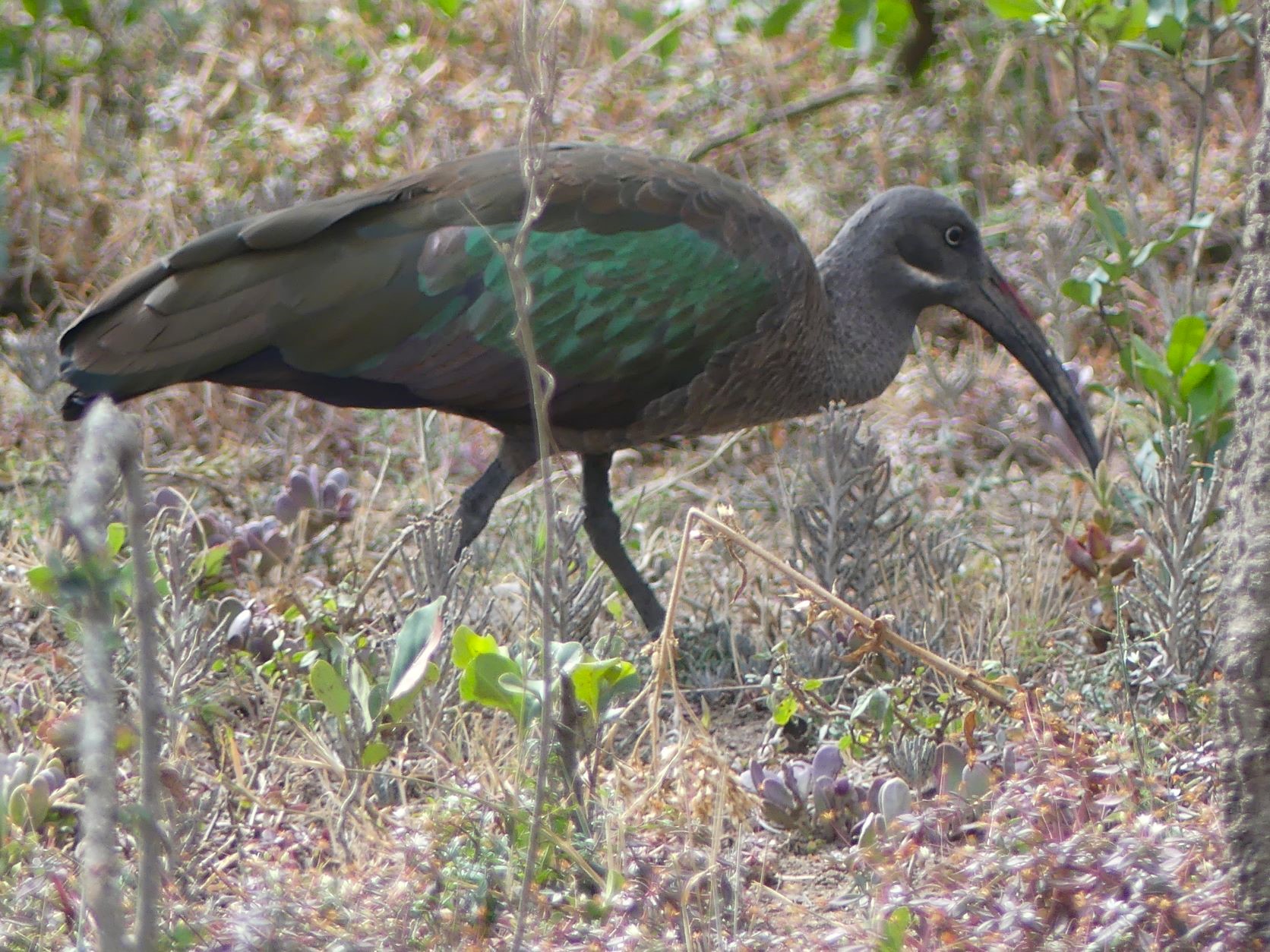
THE WONDERFUL AND EXCITING WORLD OF KENYA’S BIRDS
A little white lie ended Part 2 by declaring the conclusion was coming next. After realizing just how many bird photos were taken, it behooved me to allow birds to have their own story. So please indulge me, and enjoy this passion of mine and these African avian beauties.
OSTRICH!
The world’s largest bird. The male Masai Ostrich is a pink-necked subspecies found in the East Africa region. The Somali Ostrich is its blue-necked cousin.
They run fast, kick hard and don’t fly. They can run continuously at speeds of 30-37 mph and sprint up to 43 mph. We’d get a gander of their running capabilities as it was breeding season. During this time, the pink hue on male Masai ostriches’ neck and leg skin intensifies as a form of mating display. Think Pink and Love Me Baby!

You haven’t lived until you’ve seen ostriches playing out the mating game in the wild. We witnessed a hilarious episode whereby a horny male suddenly got the urge, and started a futile chase after a potential honey. They ran and ran, at top speed. The lady doth protest and outran the hapless guy successfully. He pooped out and called it quits. A momentary blip.
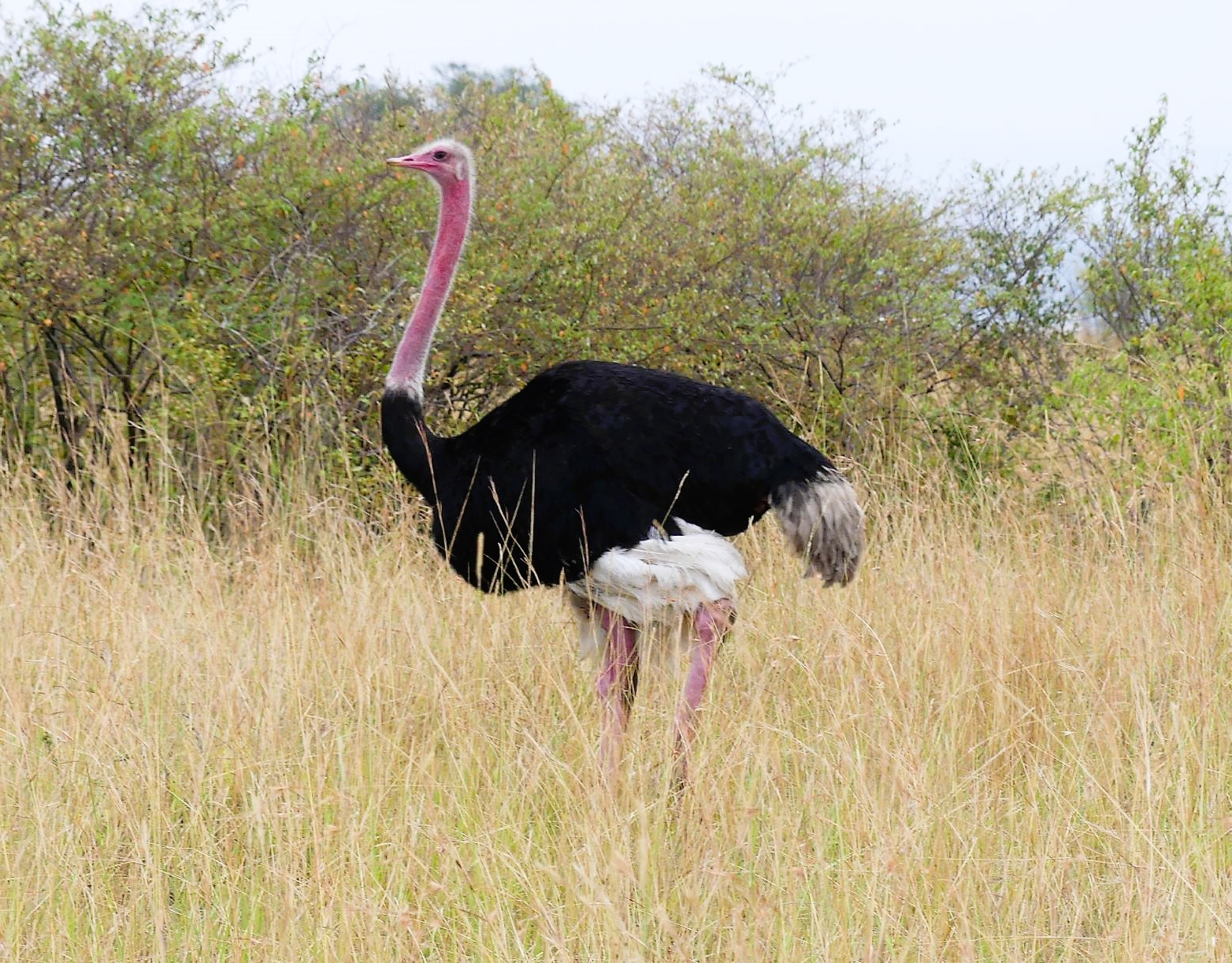
You wouldn’t want an impromptu encounter with an ostrich, as they’ve been known to attack humans with their powerful and slashing kicks. Those long legs can pack a punch.
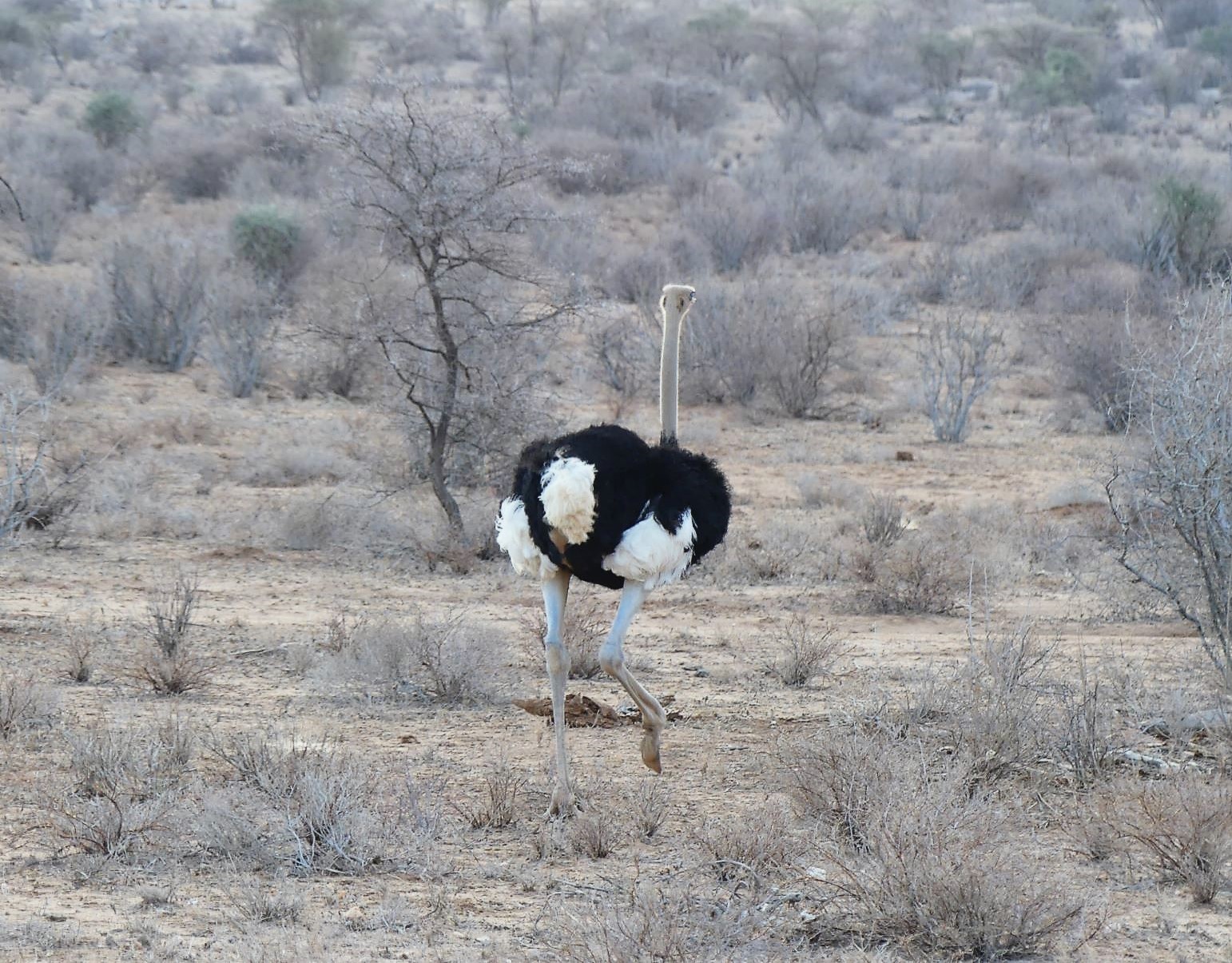
Male ostriches are called cocks or roosters, and females are called hens. She’s a drab grey compared to his contrasting black and white with pink or blue highlights; a cock sure of himself!
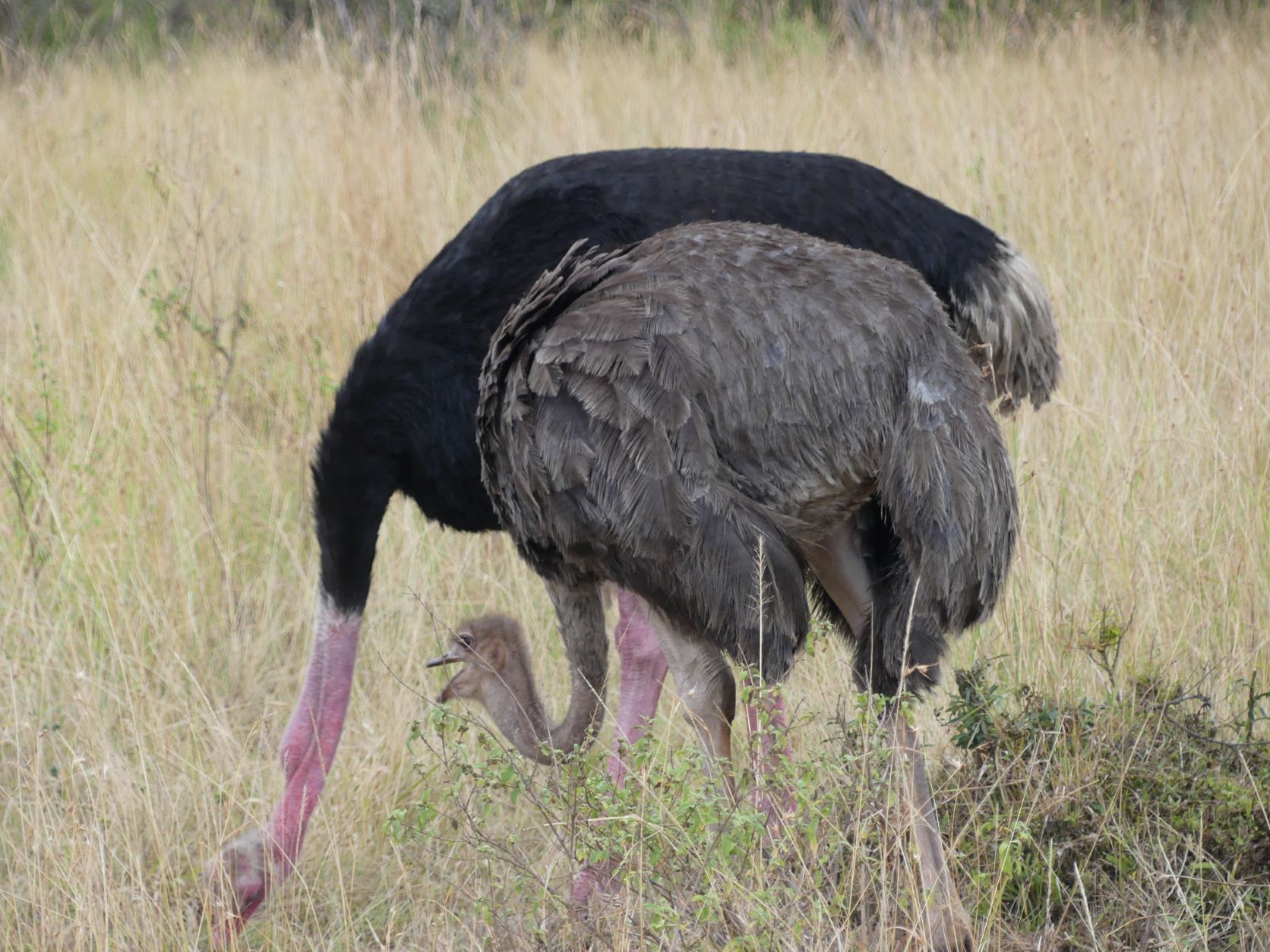
Kenya is a bird watcher’s paradise, and is home to many remarkable birds of all stripes and colors. Over a thousand bird species have been sighted and recorded within the country.
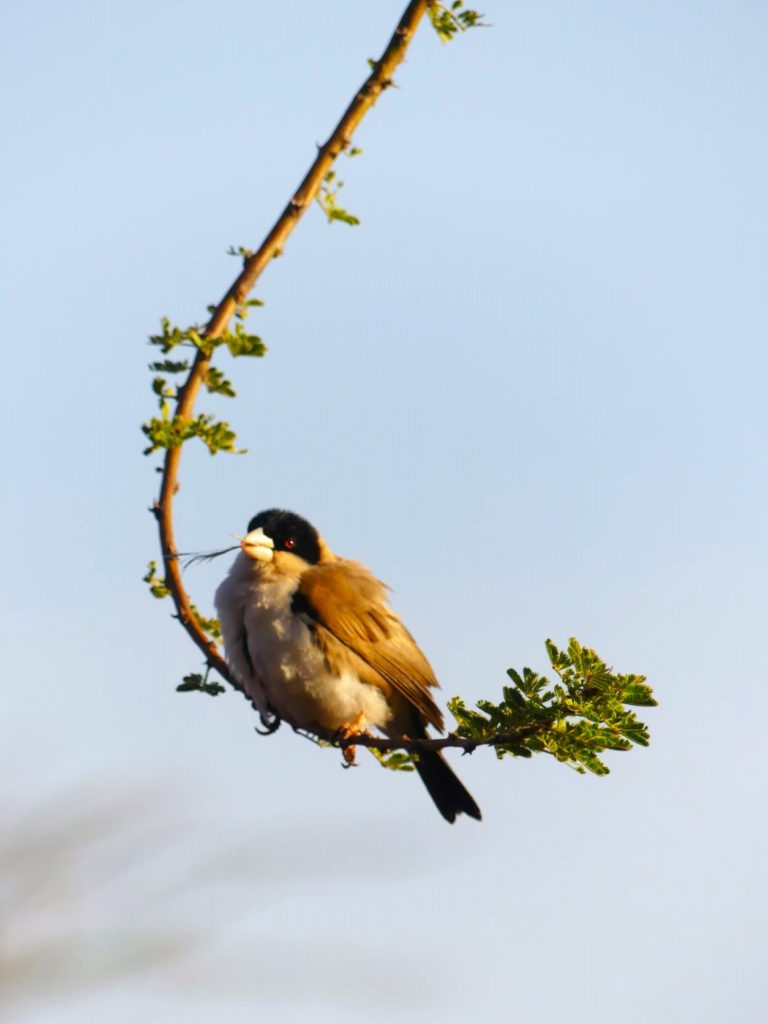
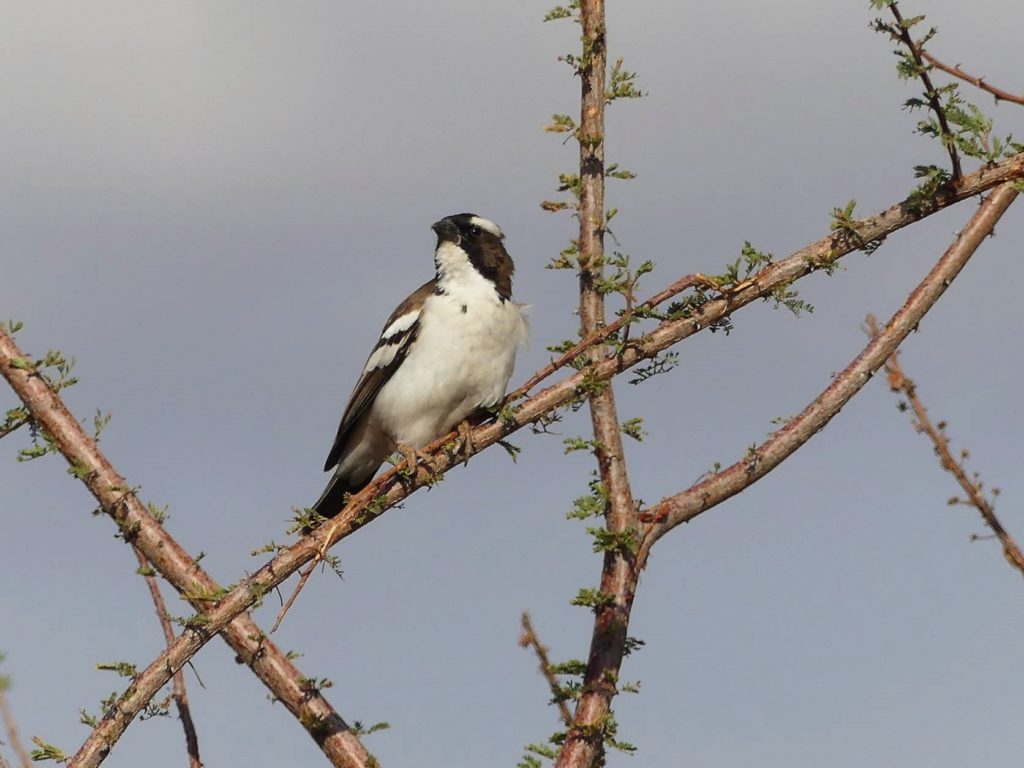
While my fellow “Safarians” may have been looking across to the horizons for animals, I’d be excitedly looking up ‘n down the trees and for those birds roaming the ground. With a steady gaze, some patience, and a sometimes steady hand, I was able to capture some familiar bird species found in Kenya.
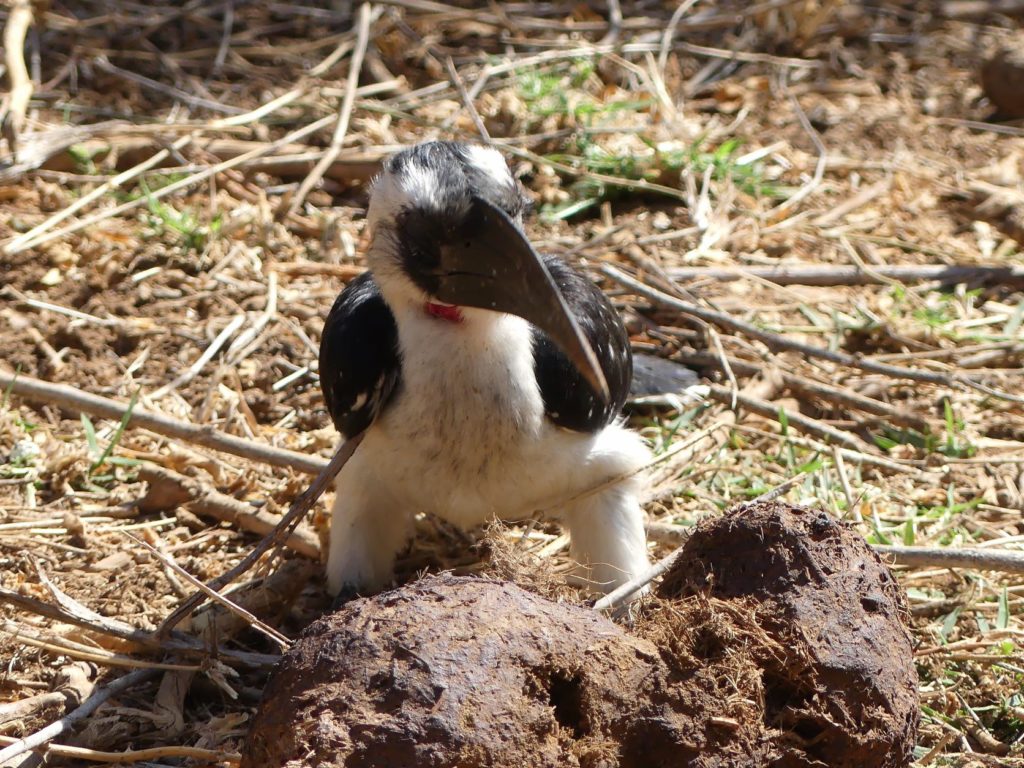
As an amateur bird-lover, the amazing birds encountered along the way were exhilarating to spot. It was always a big thrill to see a new one, and the challenge to discover its name. For that, we had Tim, with his handy guidebook, and James, our knowledgeable driver/guide. Between them, we could name that bird. Steve, too was an expert, as this was his 9th visit to Kenya, and he supplied us with a 60-bird checklist; more than half of which I was able to cross off.
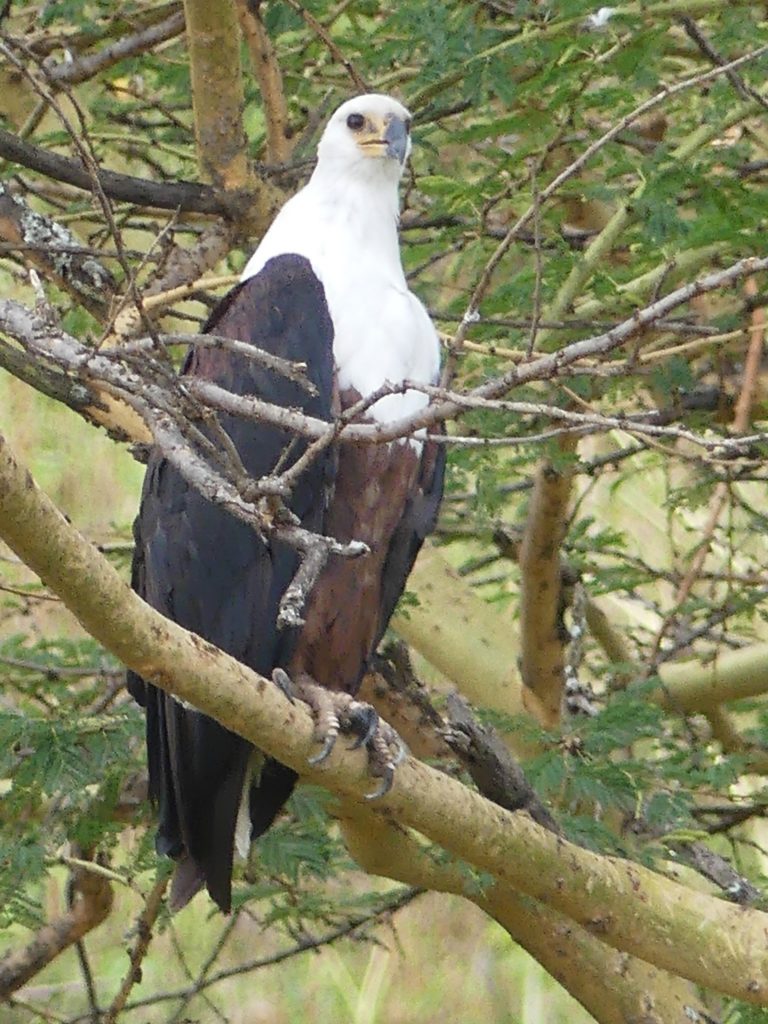
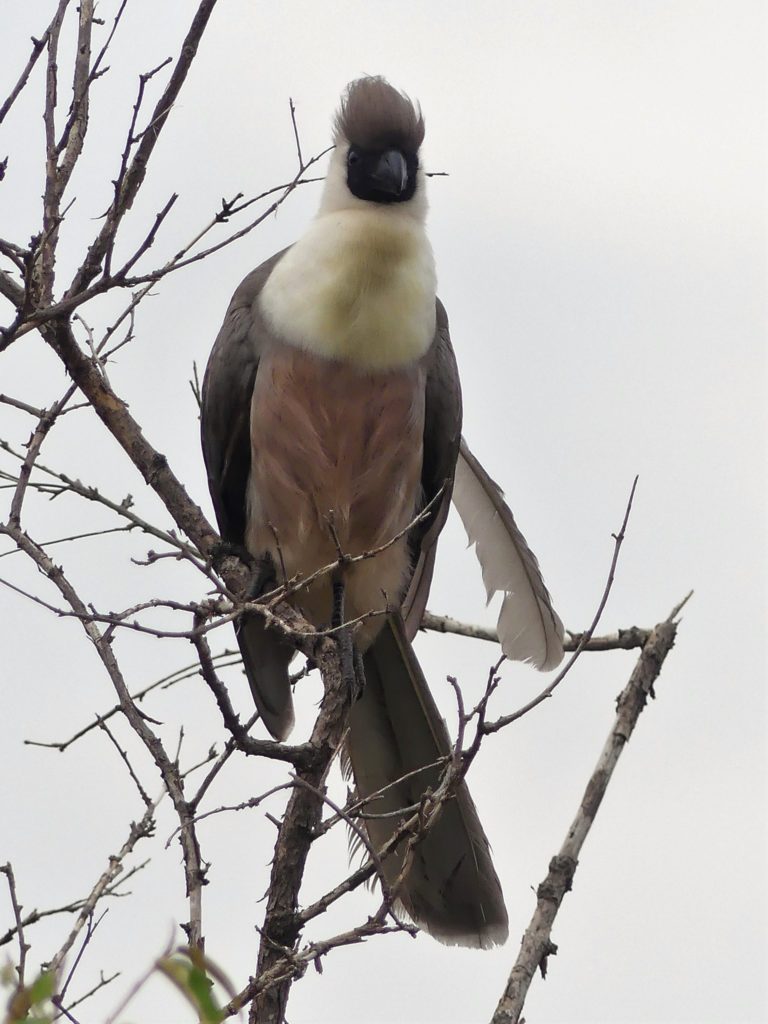
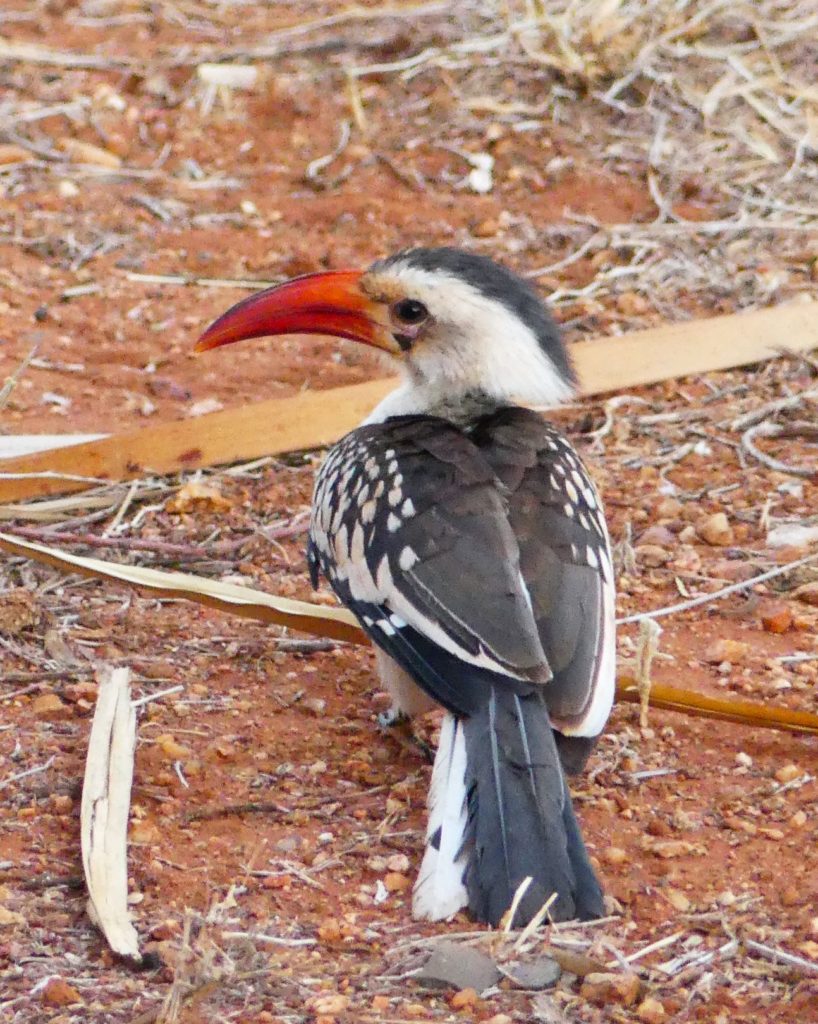
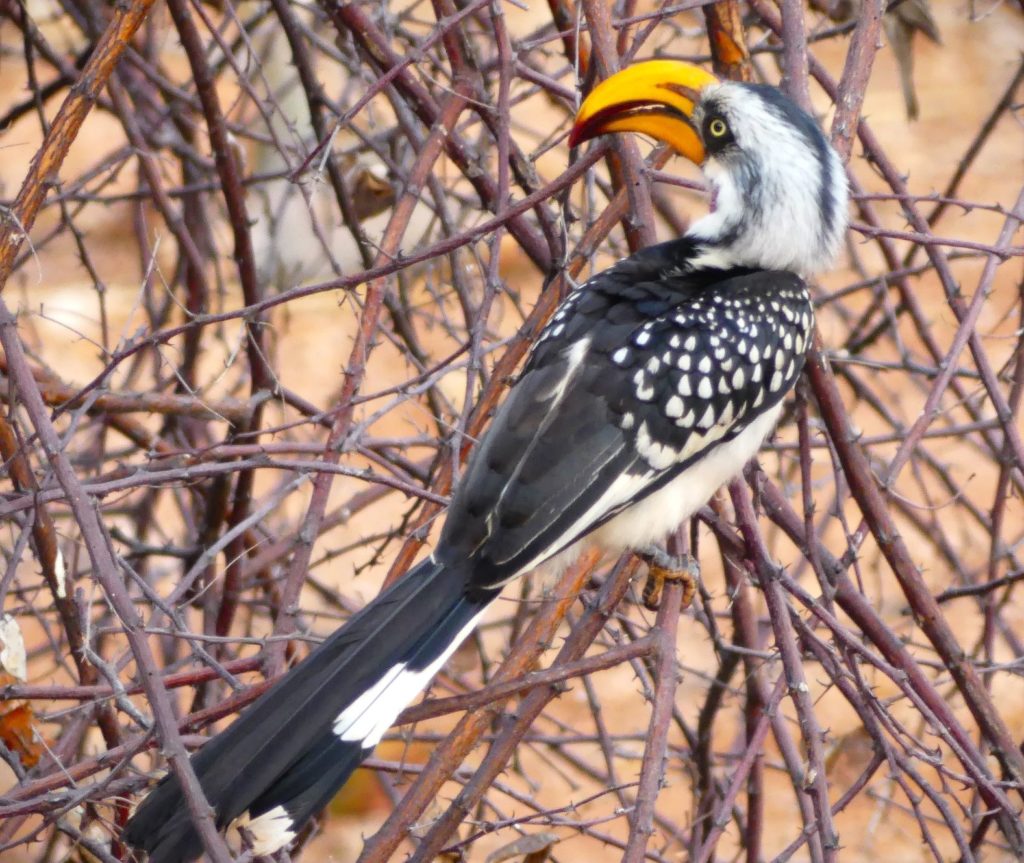
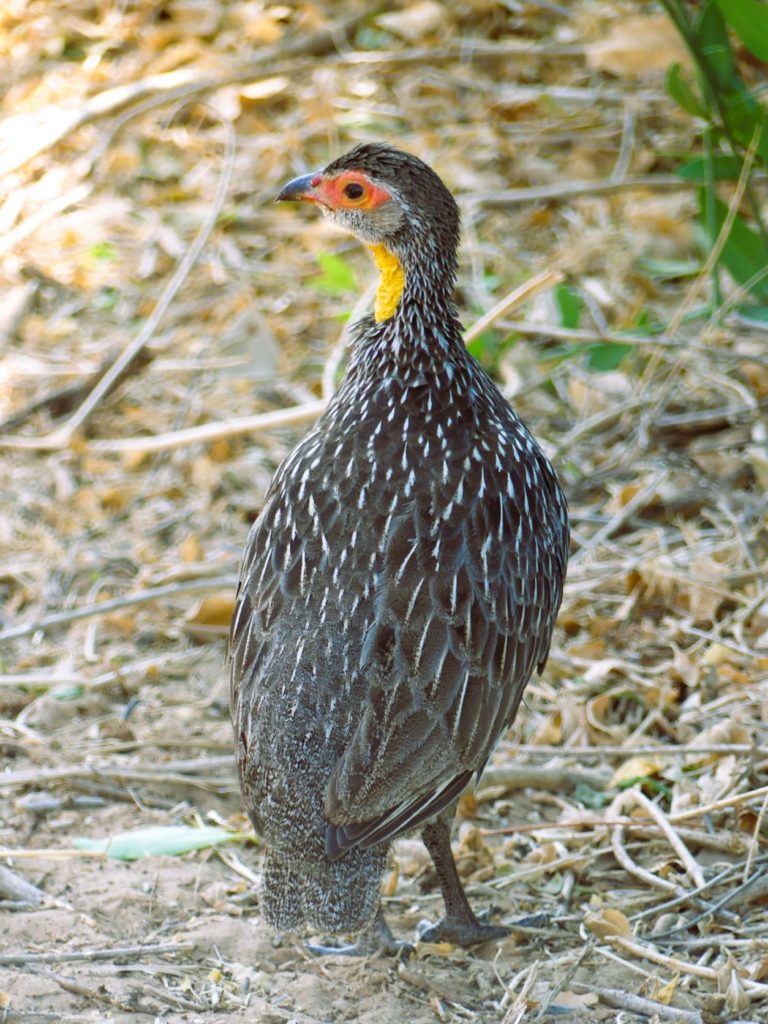
The feather colors, unusual appendages, legs, beaks and eyes are all clues in trying to identify the bird.
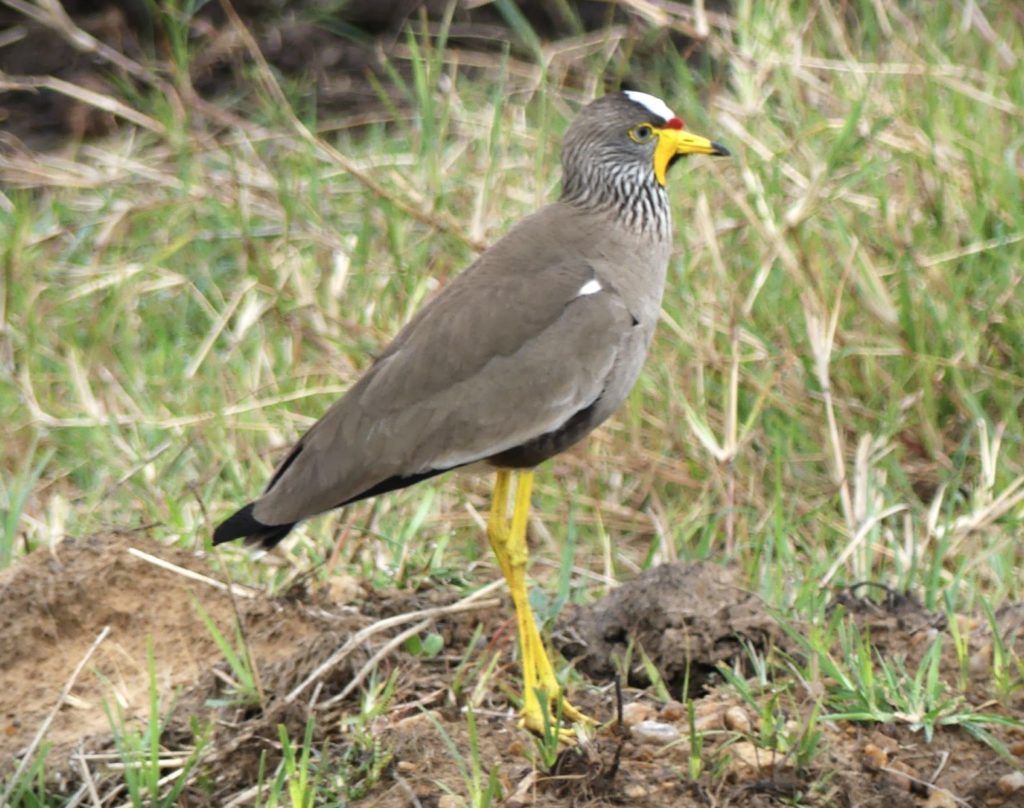
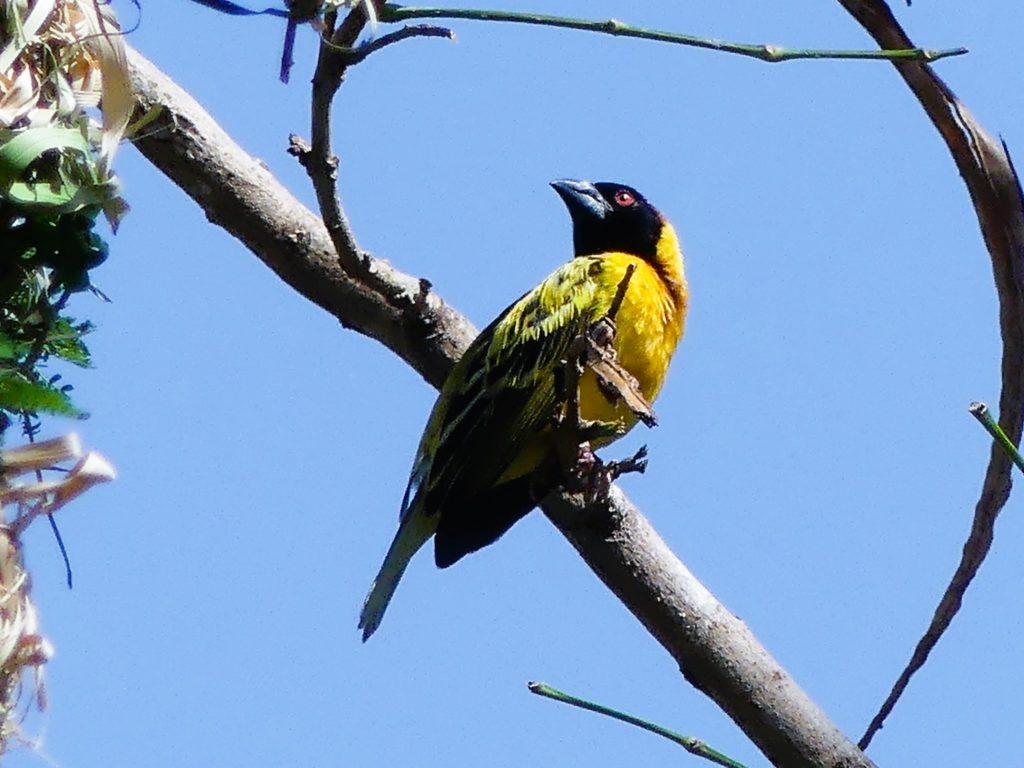
The Lilac-breasted Roller is the National Bird of Kenya and what a looker. Stunning! Its striking and exquisite colors are nature’s universal language of colors.
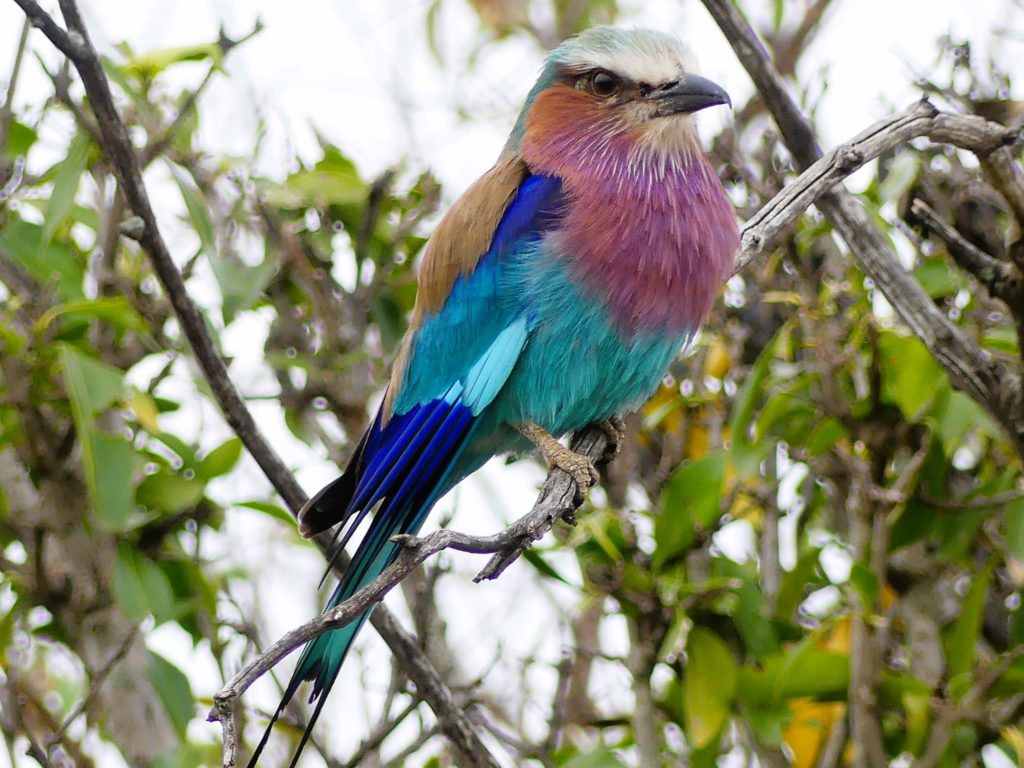
Superb Starlings are everywhere and thank goodness, because you never tire of looking at these photogenic gems. Most colorful, and a marvel to see how sunlight reflects on their beautifully marked feathers, making them indeed superb to look at again and again.
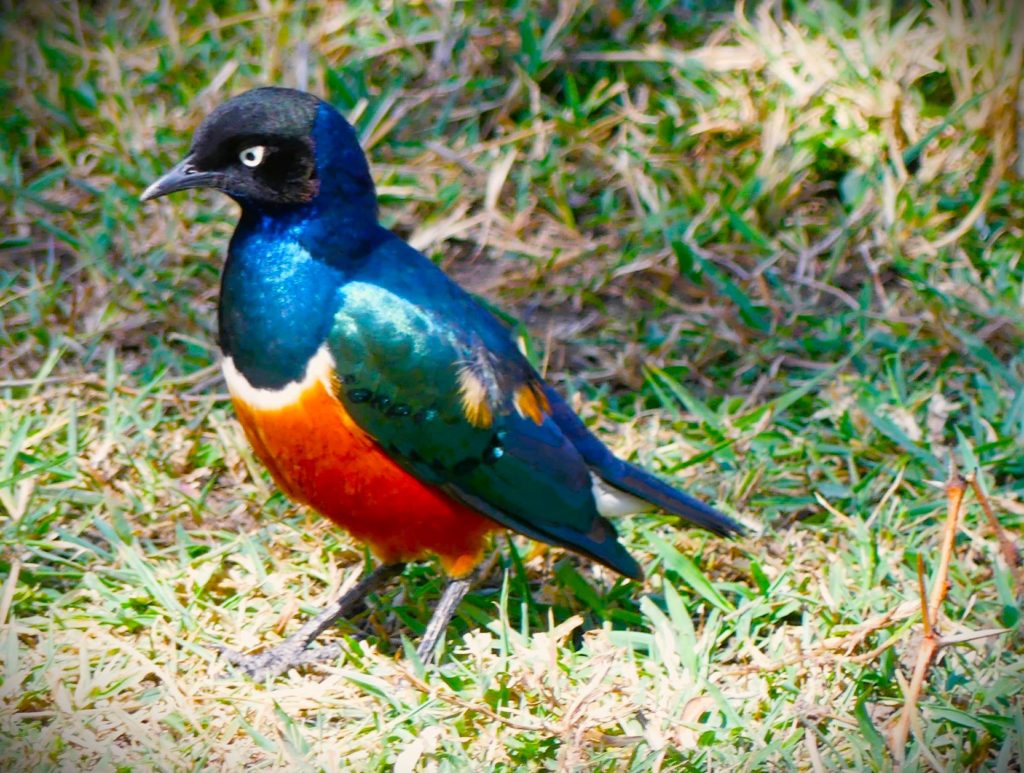
Amethyst Sunbirds, bright with iridescent feathers and hooked beaks. Fascinating to watch the black bird change color schemes right before your eyes in the bright sunshine.
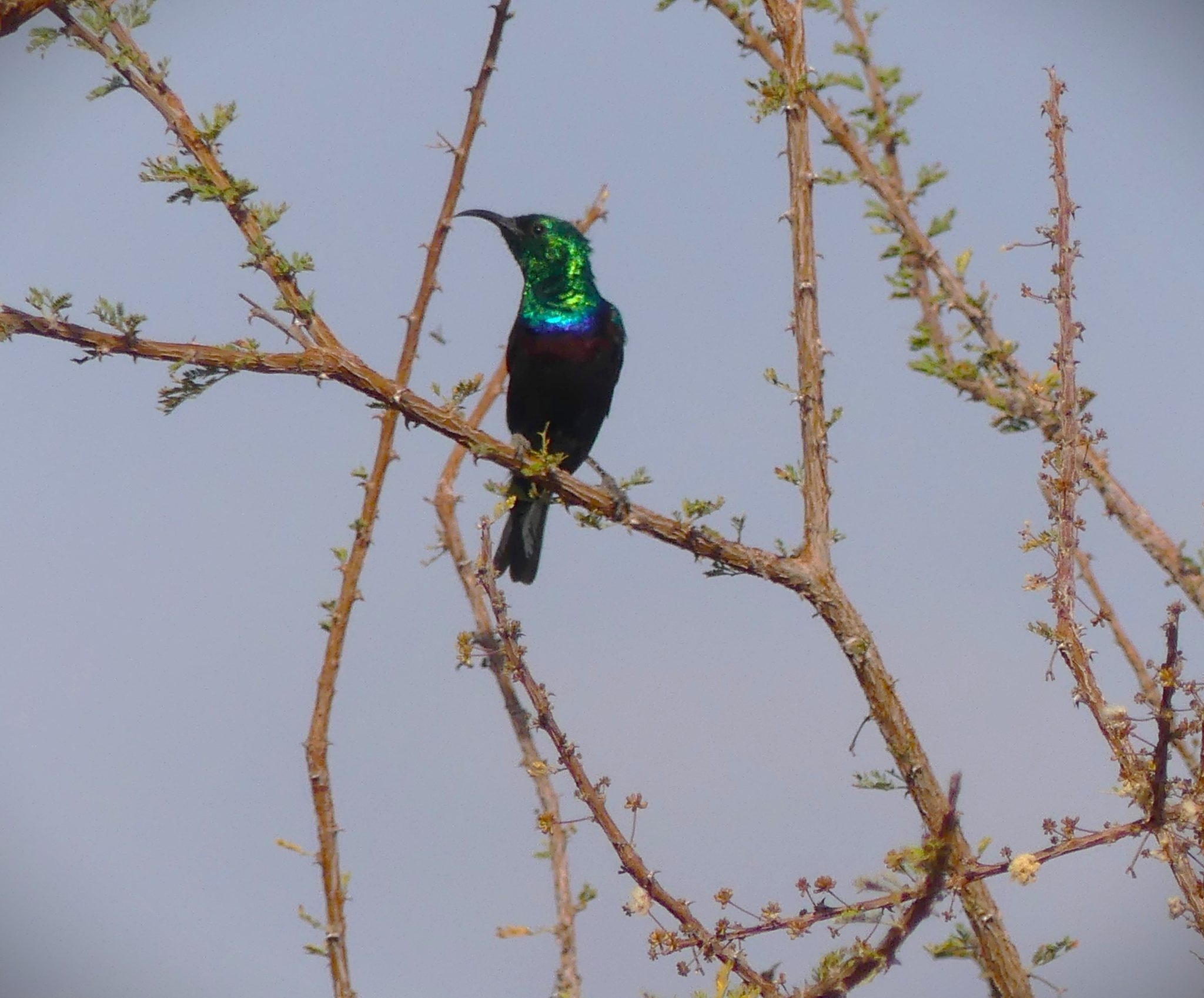
Vulturine Guinea Fowl – largest of the guinea fowls. This unique-looking guinea fowl is very social and gather in large flocks of up to 50 fowls. They were spotted everywhere we went. As nightfall approaches, they gather themselves up and roost in trees by the dozens.
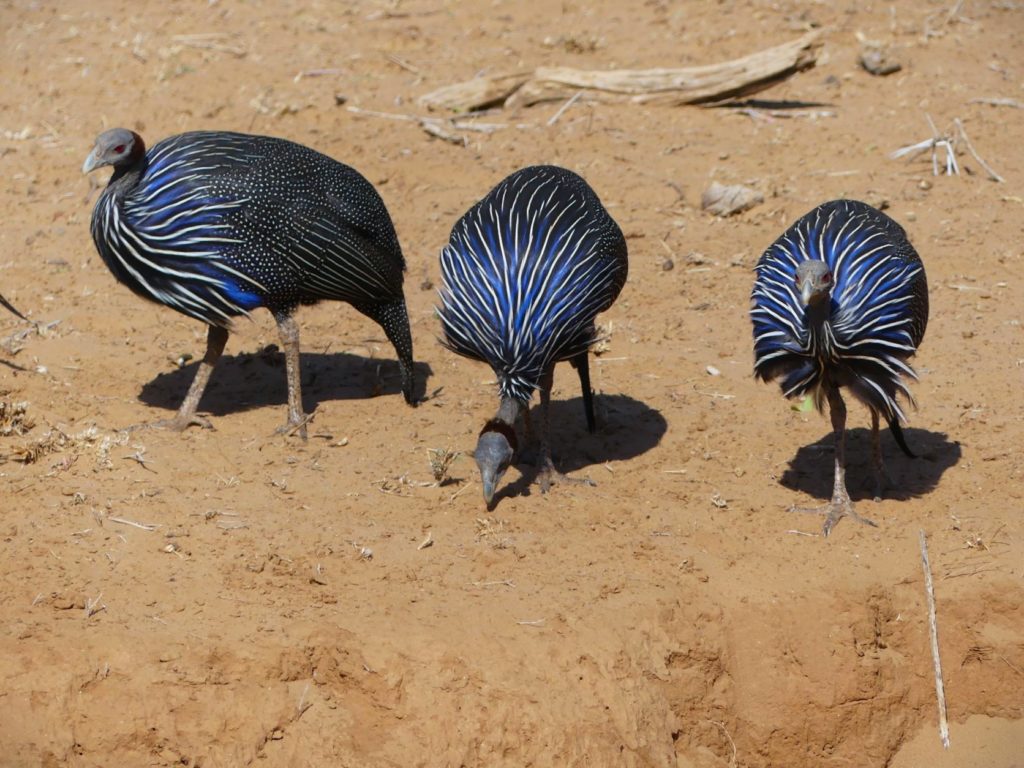
Martial Eagles are the largest of the African eagles and incredibly powerful, capable of knocking an adult man off his feet. This fellow is sitting atop his kill – a vulturine guinea fowl (above). I’ve spared you the photo featuring his dying victim.
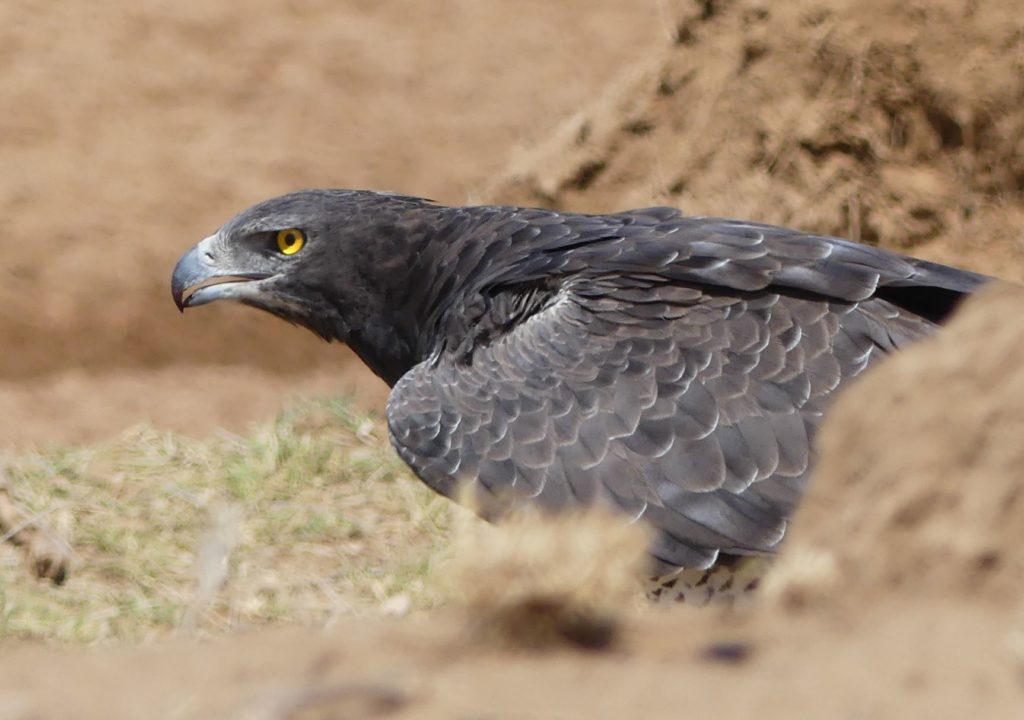
Little bee-eater … as their name suggests, this brilliantly colored little bird fly-catches bees and other insects. Before eating a bee or wasp, it removes the stinger by repeatedly hitting and rubbing the insect on a hard surface. Clever little devil! Wish we had some of them flying around our neighborhood with all the wasps.
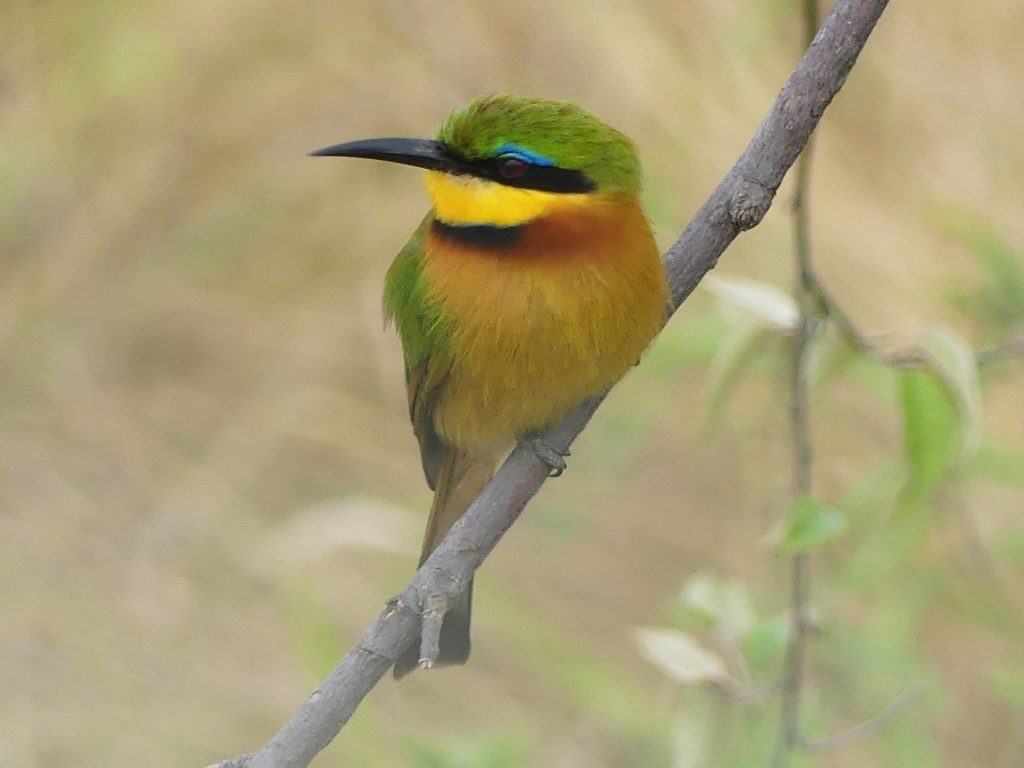
WATERBIRDS!
Here, just a few of the many waterbirds and nearshore birds we came across on our travels. Lake Nakuru (see flamingos below) is the source of most of these. The African Fish Eagle, as pictured above, is always a standard water body resident.
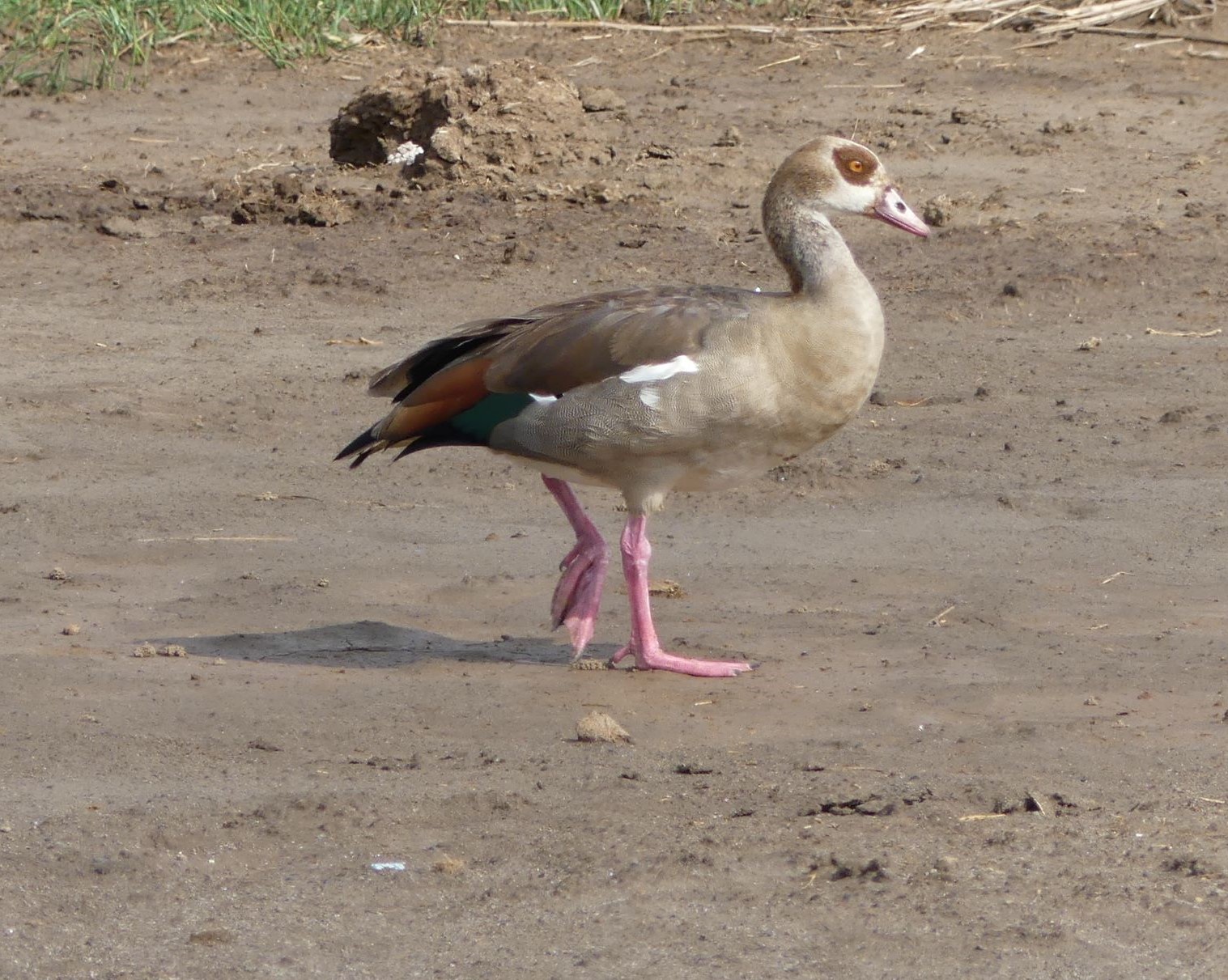
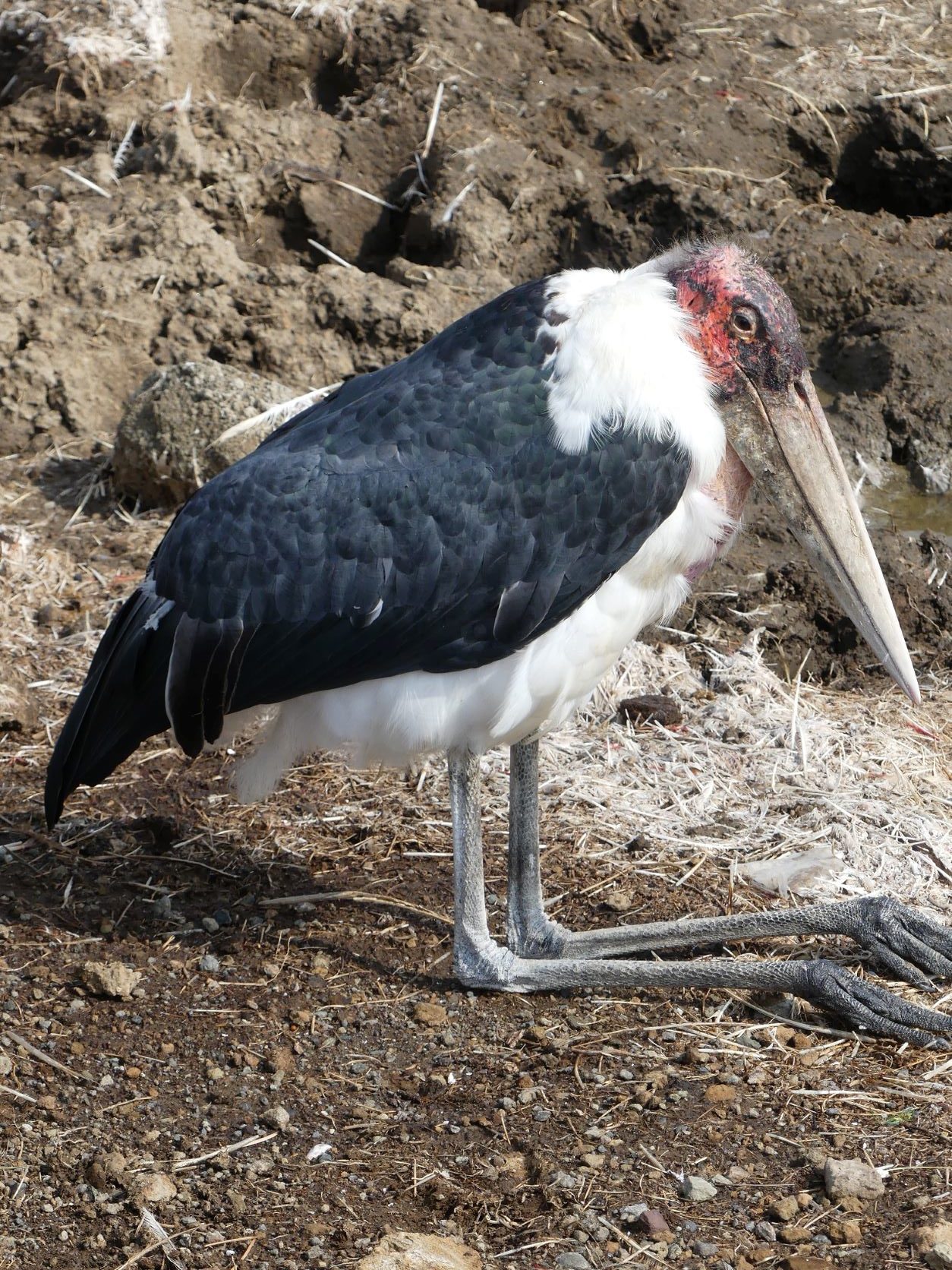
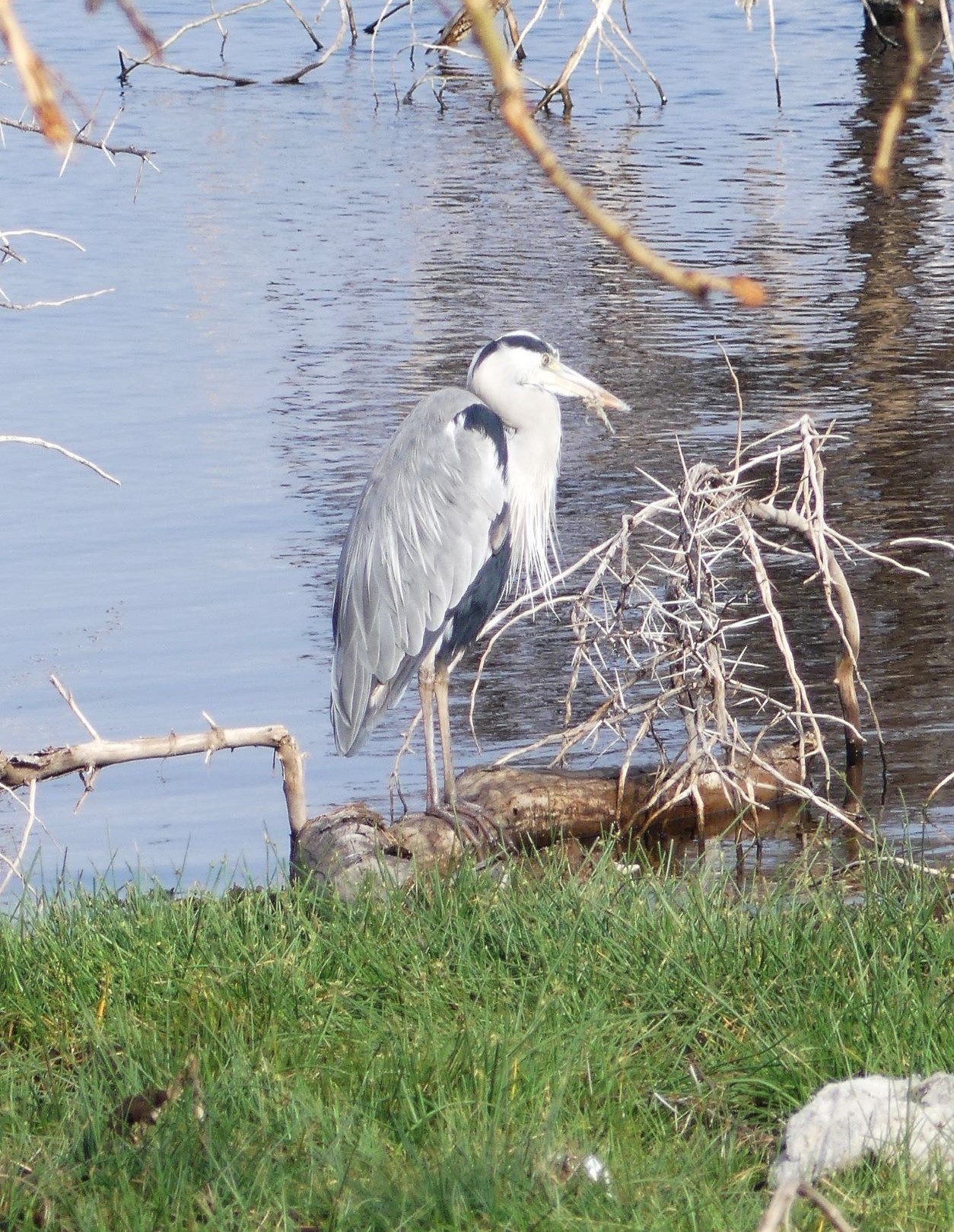
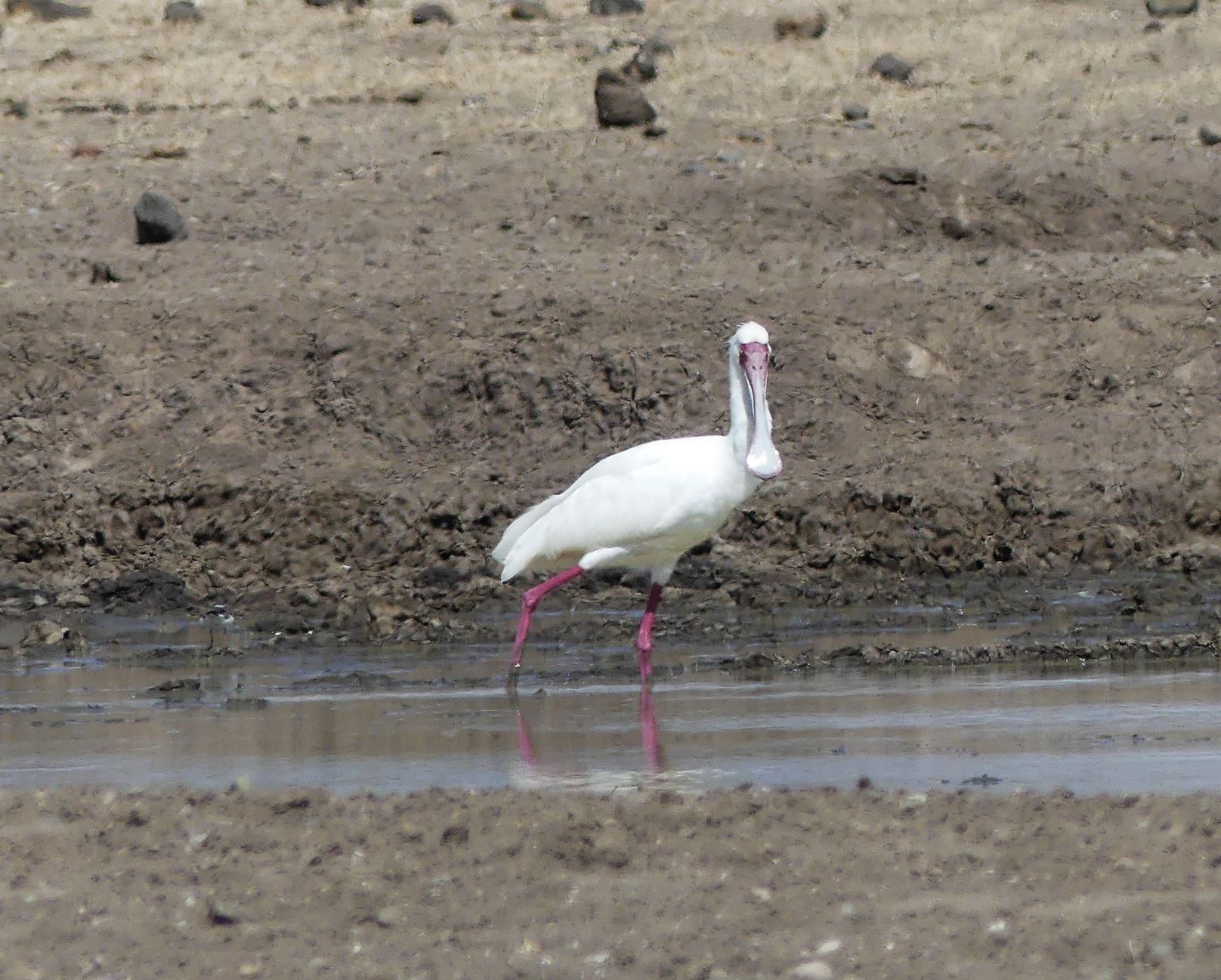
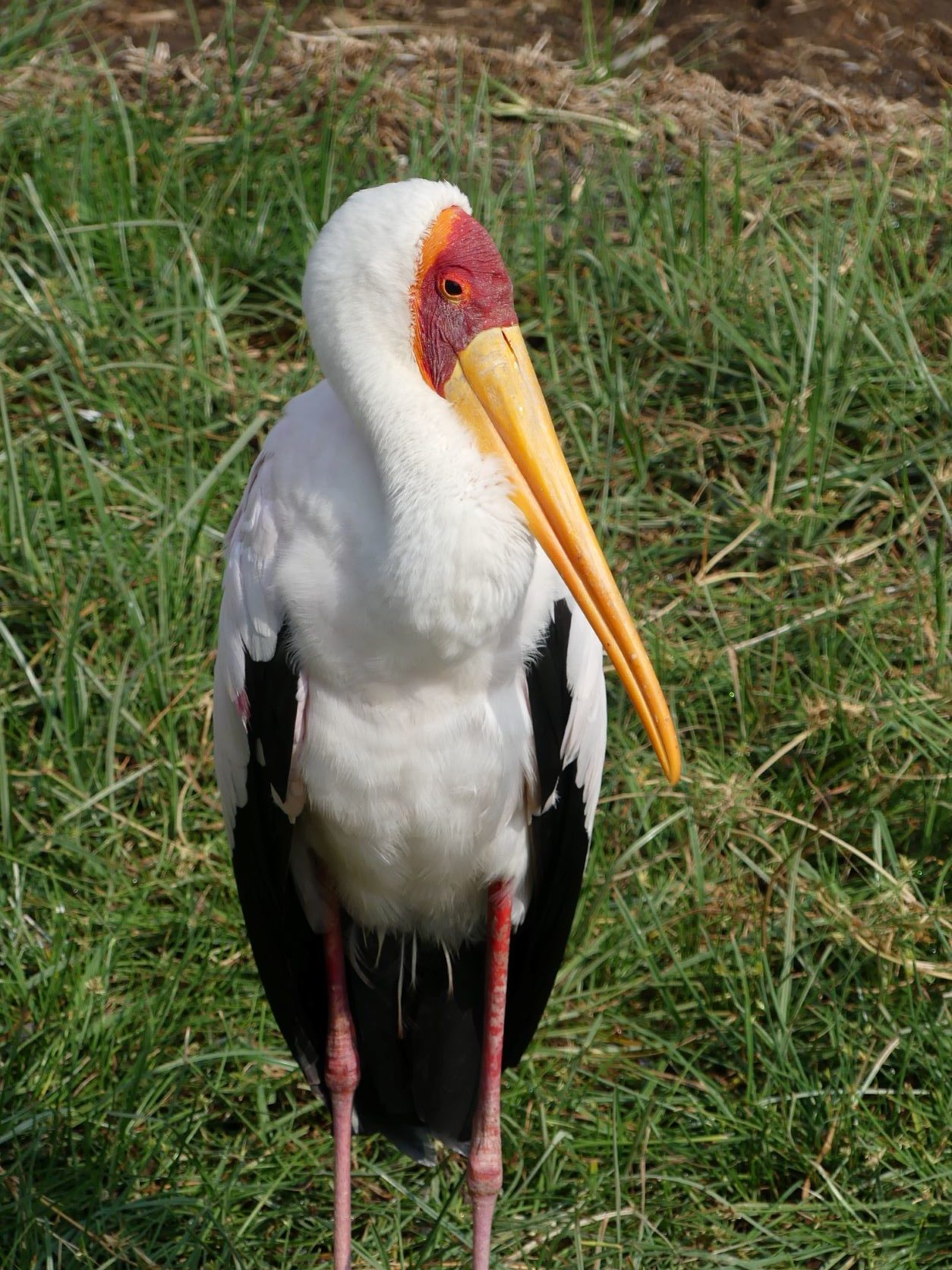
LESSER FLAMINGOS!
“Flamboyance of Flamingos” – a Flash Mob, aka a massed grouping of Lesser Flamingos, nesting on the mile high shores of Lake Nakuru. It was a breathtaking sight to behold; certainly a highlight of my Kenyan Safari, and most definitely in the Top Five Wow Moments.
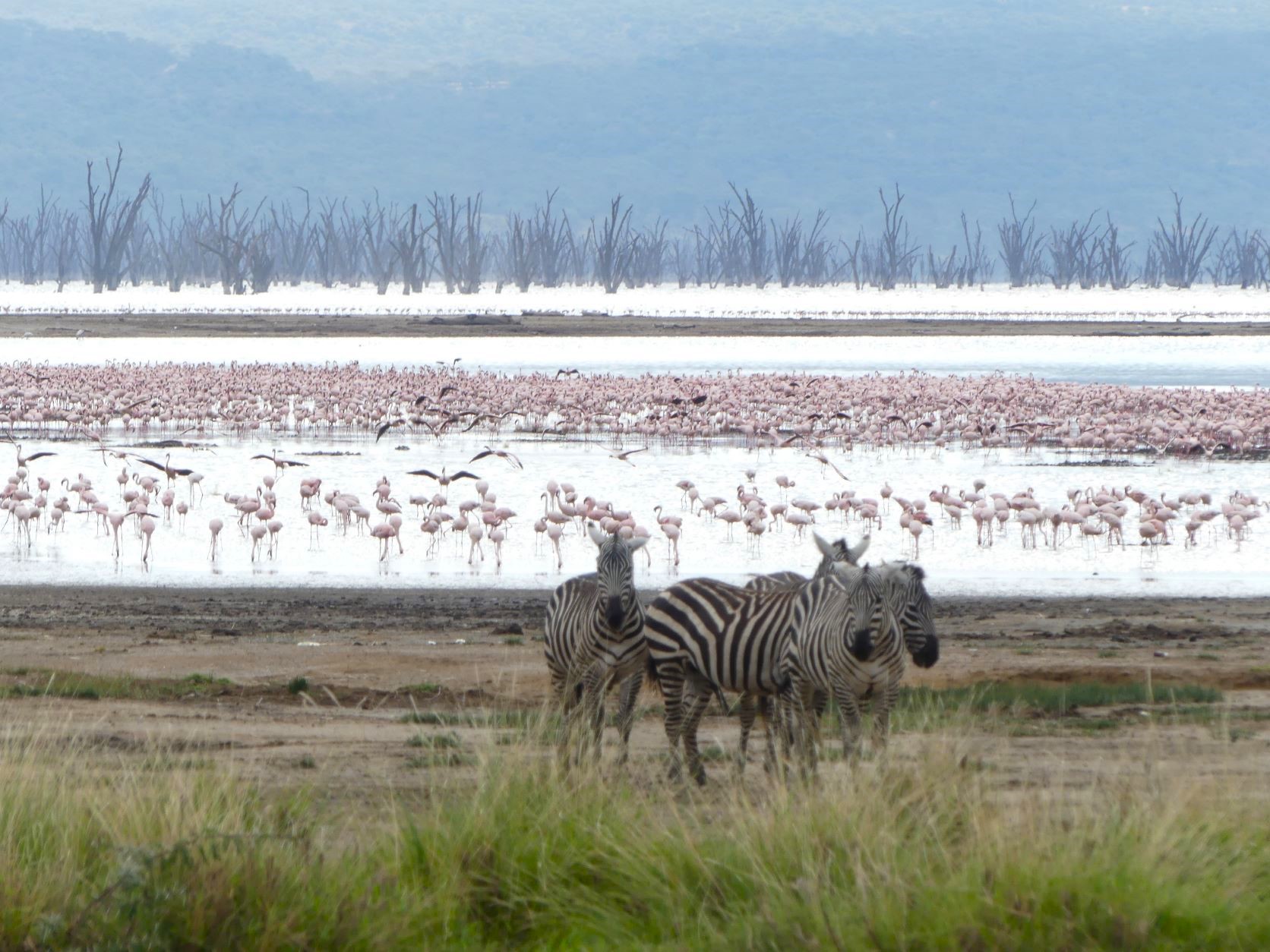
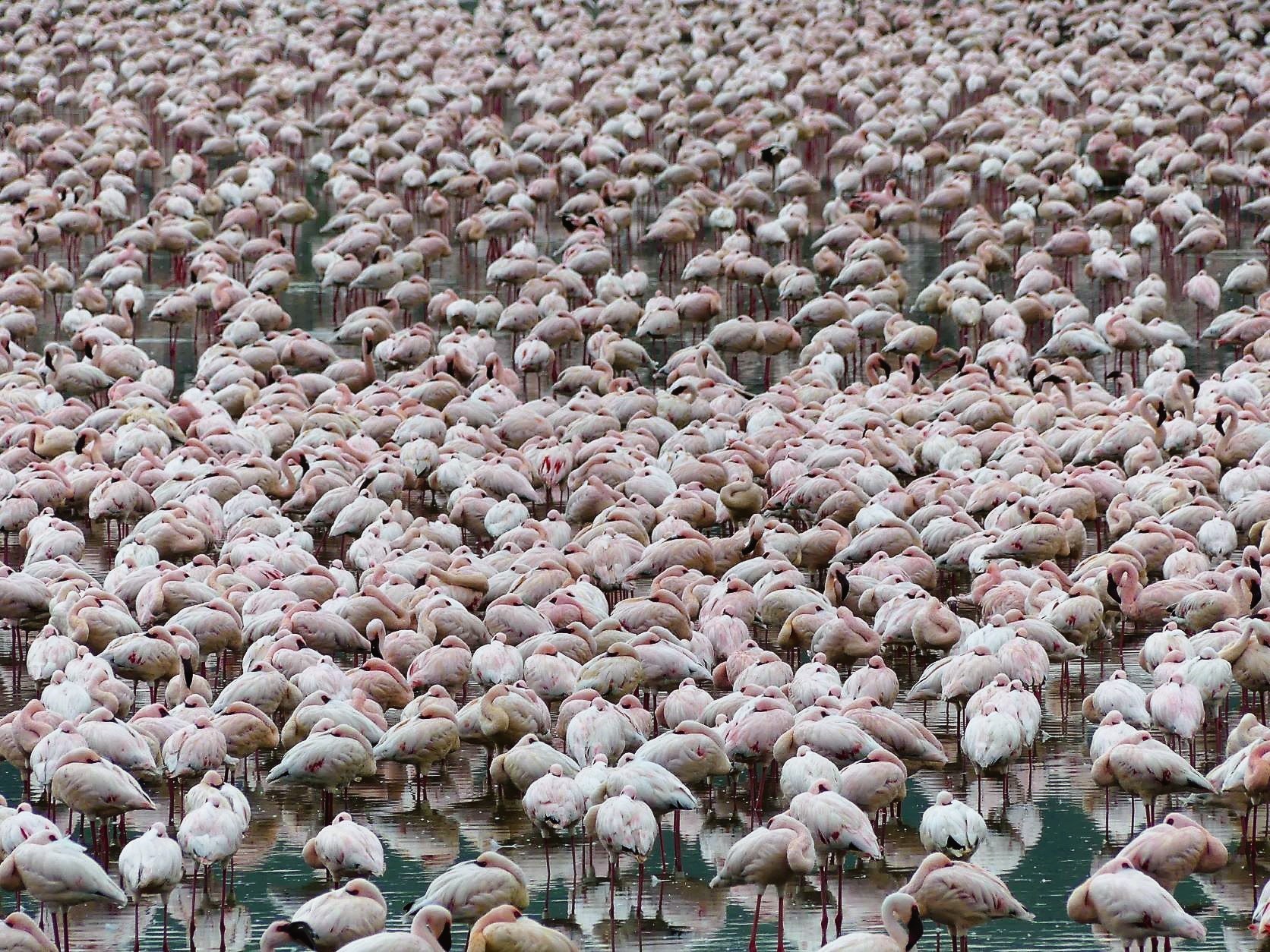
These long-legged beauties can be found in the many thousands in Kenya’s incredible Rift Valley lakes. Most of the lakes are alkaline and have blooms of blue-green algae on which the flamingos feed. They feed by siphoning the algae with their incredible curved beaks, and the algae in turn give them their stunning pink color.
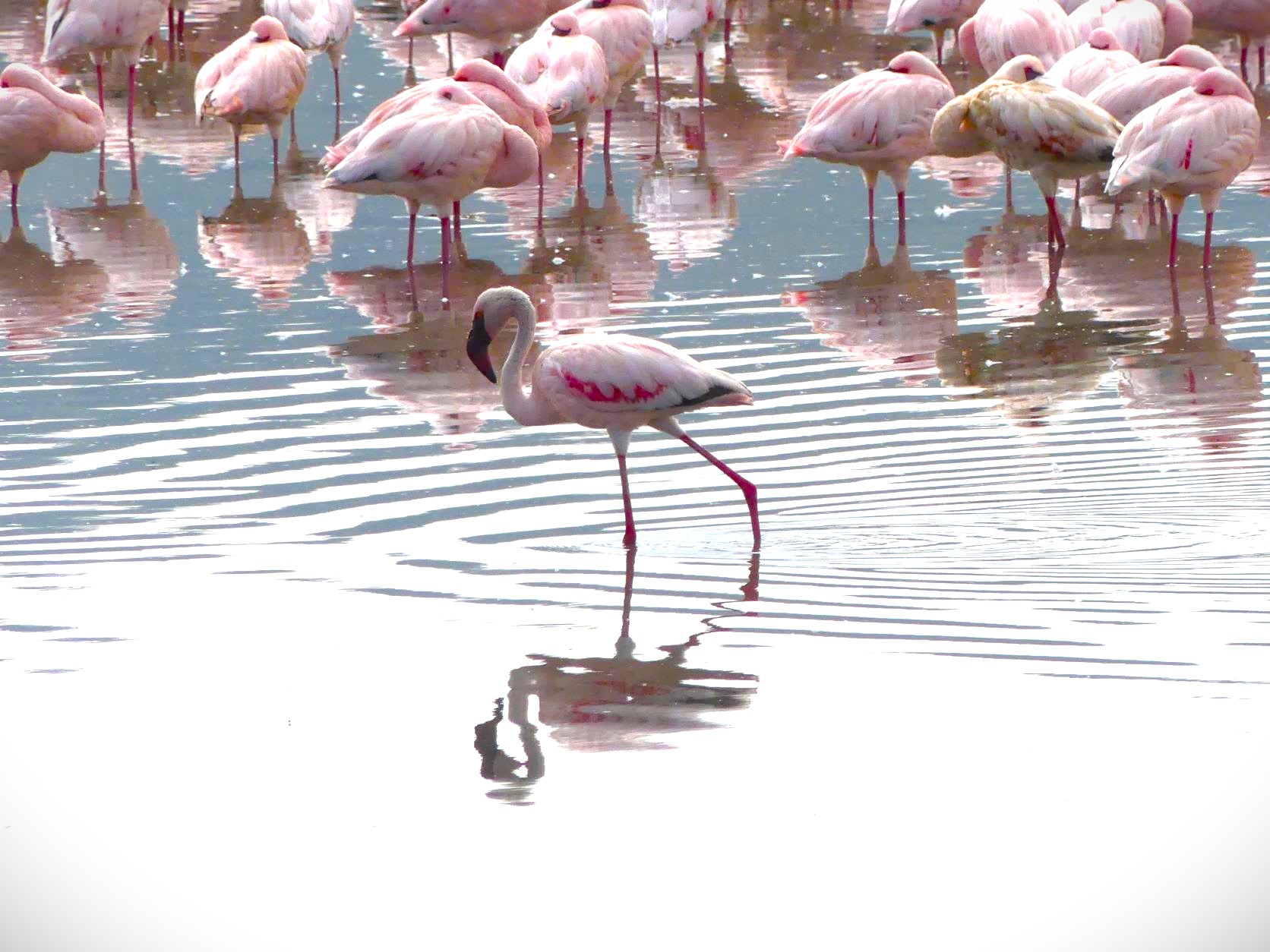
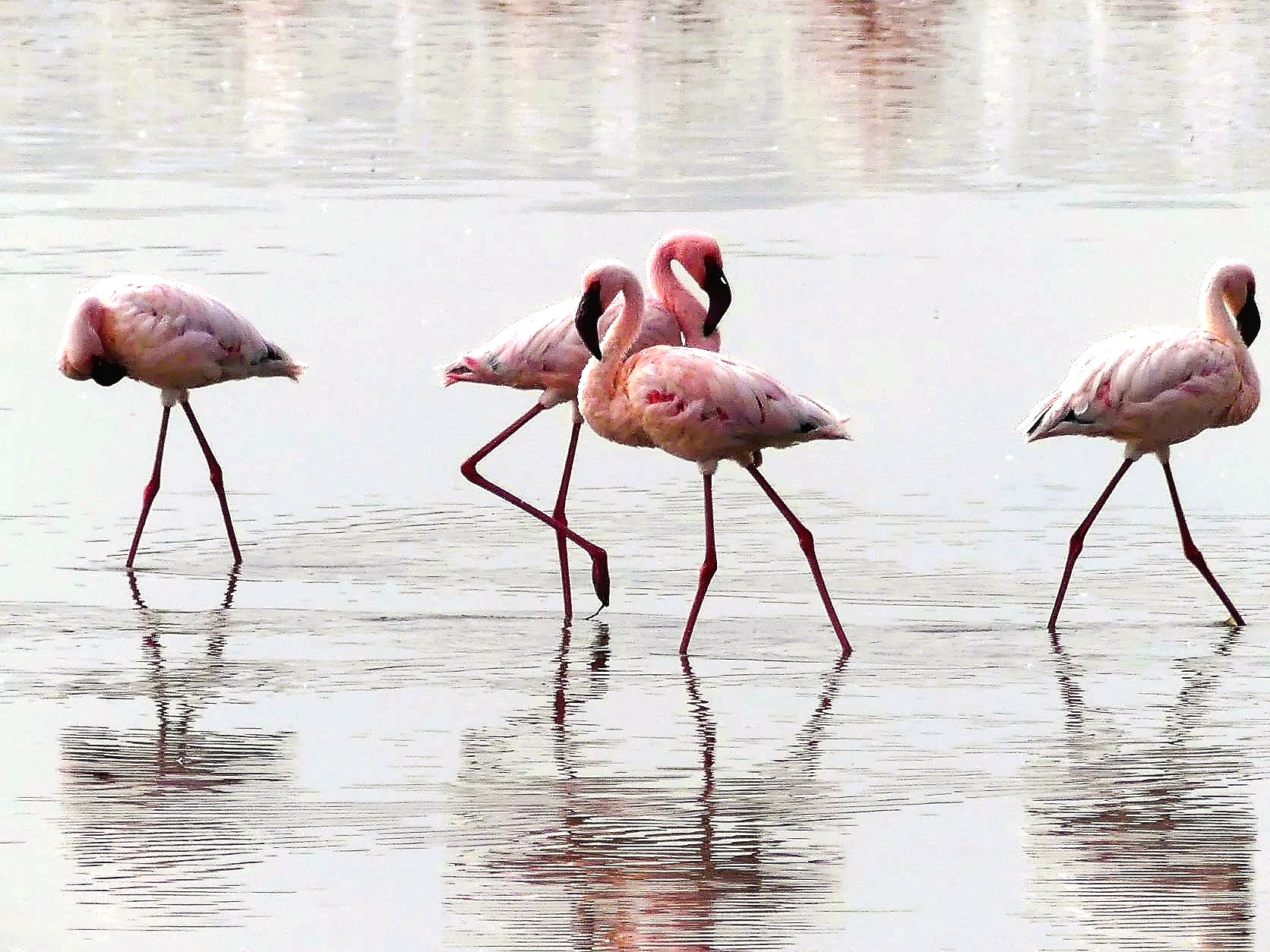
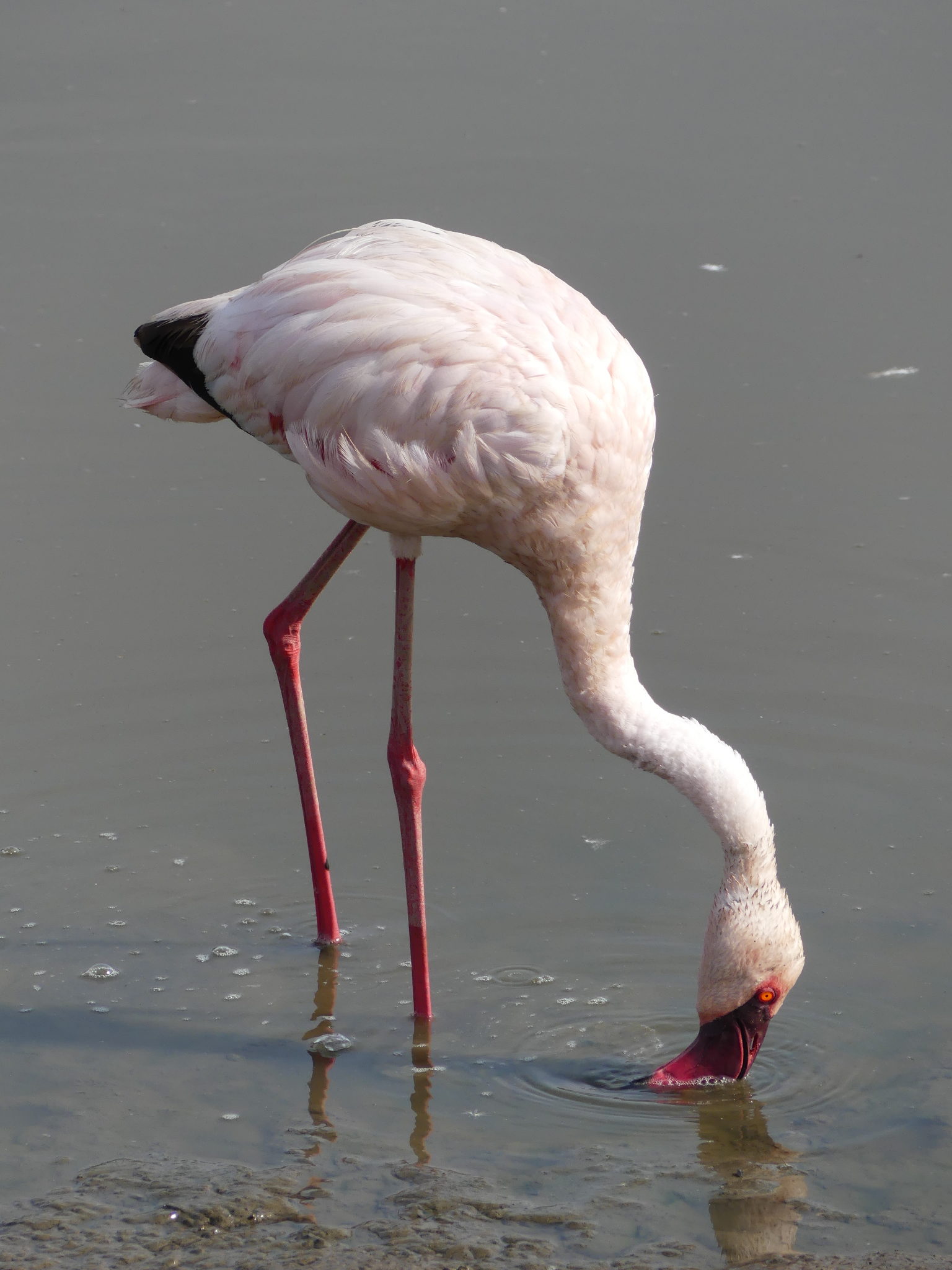
A great part of spending time with the flamingos is a minute video I shot with all the cacophony only a fabulous flamboyance of flamingos can make.
Interesting note: you might wonder how do parent birds identify their baby chicks with all that noise? It’s due to vocalisation occurring hours before the chick hatches that establishes a bond between the parents and the chick. And there you have it.
To close on birds …. here’s a beauty, the Grey-crowned Crane. A most elegant and graceful crane and oh so photogenic. Strike a pose!
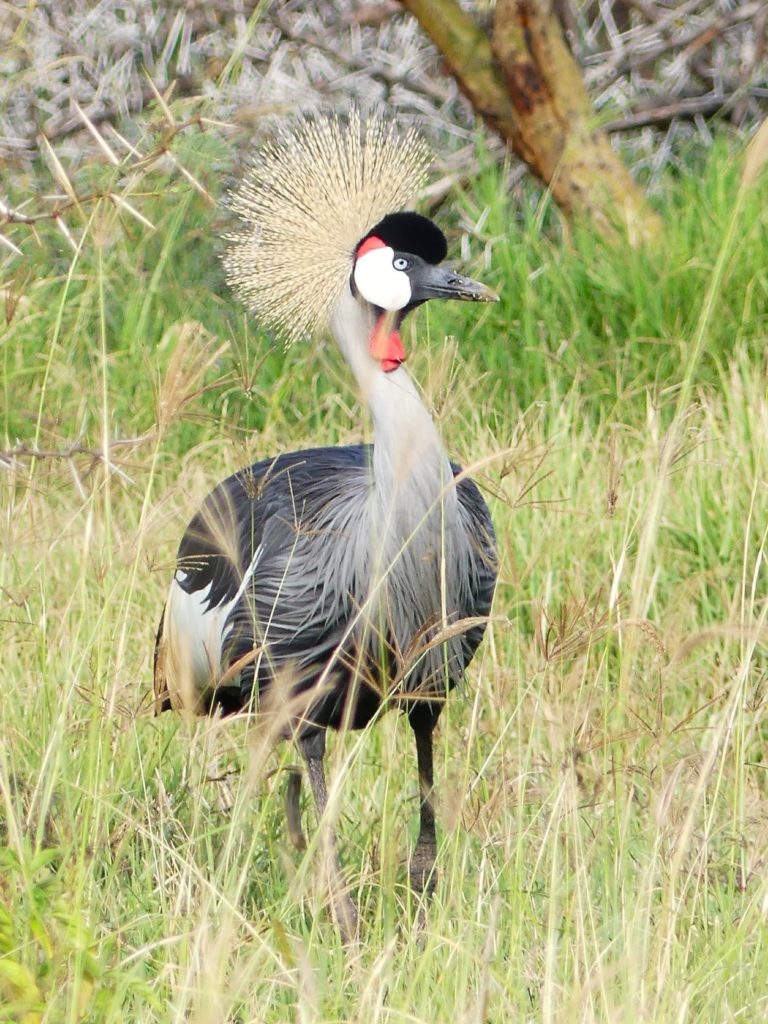
Thank you for spending a bit of your time with me reliving some most memorable times spent in a spot on our planet worth treasuring, protecting and visiting.
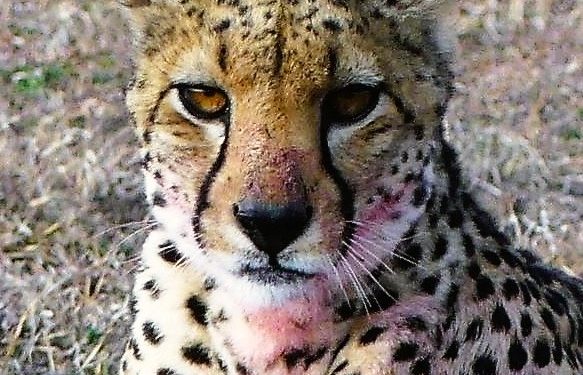
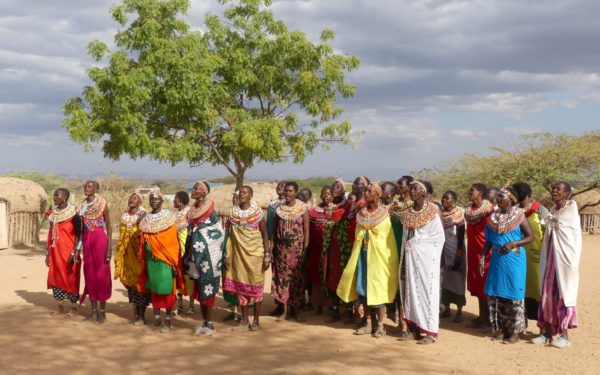
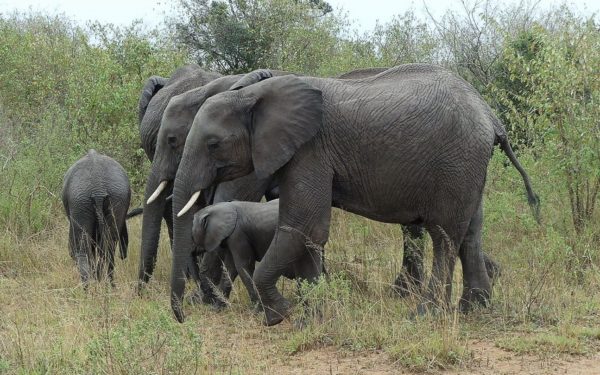
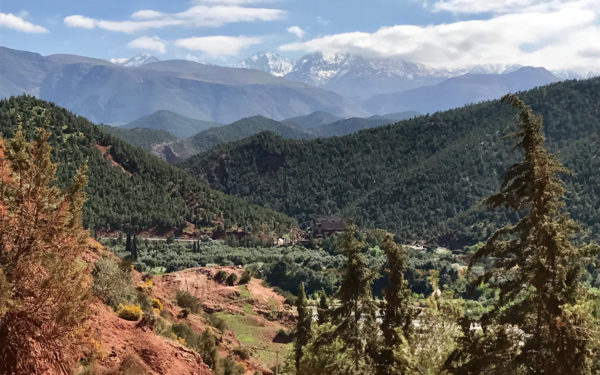
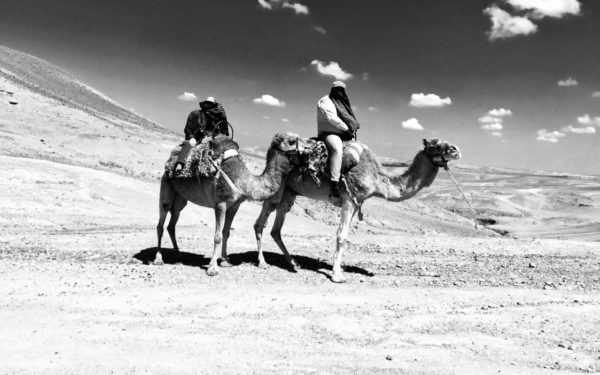
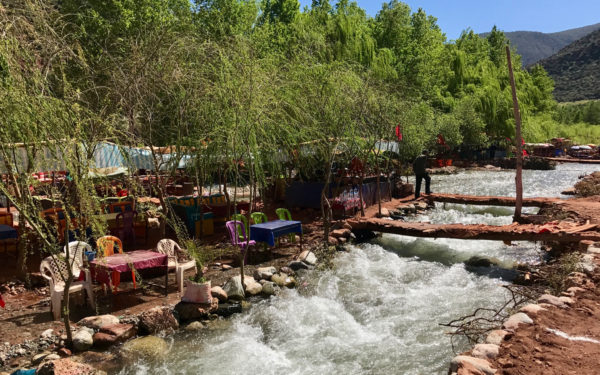
Simply stunning photos, David! A fabulously descriptive and fun look at Kenya’s extraordinarily beautiful birds.
I have to agree with Arvada, those pictures are breath taking! Thankyou so much for sharing!
Such amazing photos! Our group listed 30 bird species on our Kenya trip with
Steve. Your photos surpass any we mere mortals were able to produce. Bravo!
David, your photos are so beautiful! I had no idea Kenya has such colorful and wonderful birds. Thank you for sharing.
I’m so glad you broke your self imposed deadline and gave us a glimpse of these amazing birds!